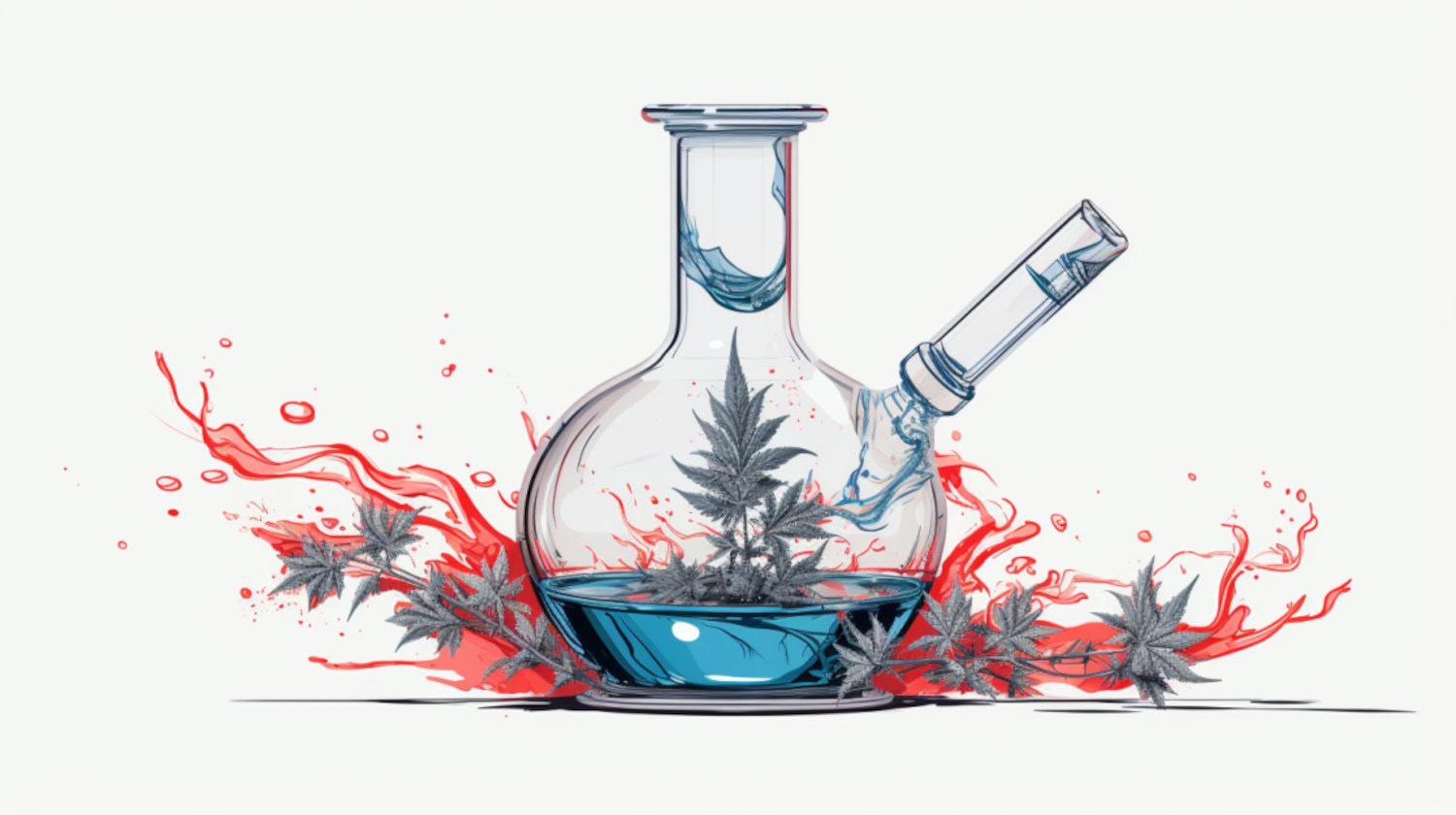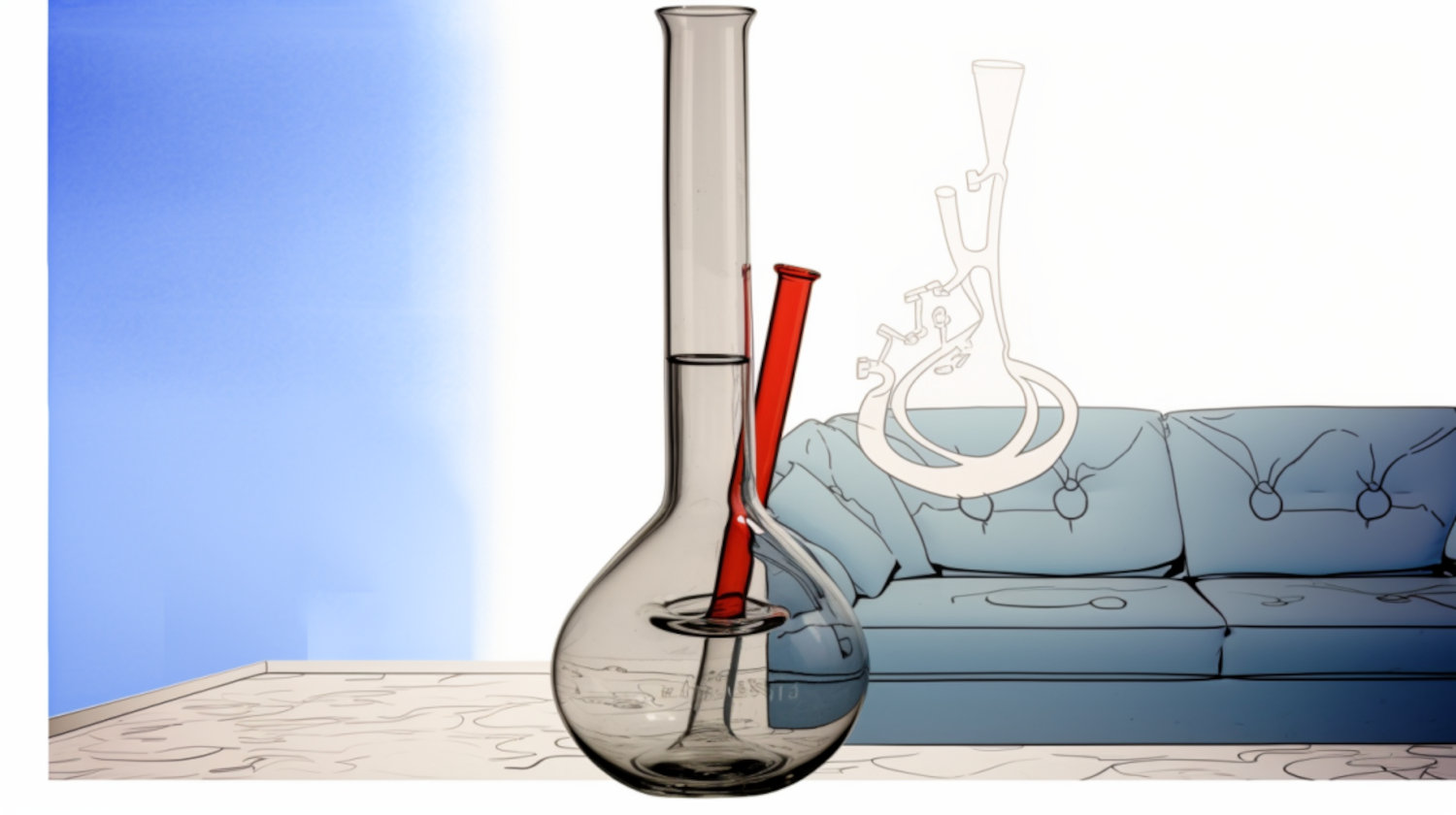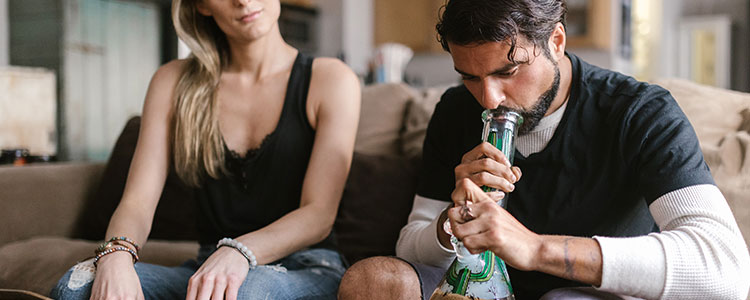In This Article
- The Alcohol and Salt Method
- Materials Needed:
- The Cleaning Process (Glass Bongs):
- Why is a Clean Bong Important?
- How Often Should a Bong Be Cleaned?
- How to Clean a Silicone Bong
- Is a Special Cleaner Needed for a Bong?
- What to Look for in a Bong Cleaning Kit
- The 5 Best Bong Cleaning Kits
- 1. Formula 420 3-Pack Bundle (Top-rated, effective, multi-purpose)
- 2. Blue Beetle Brushes Pro Kit (Versatile, thorough cleaning, scratch-free)
- 3. Higher Standards Salt Rox (Chemical-free, eco-friendly)
- 4. Piece Water Solution (Preventative, easy to use, fresh taste)
- 5. BoroBuddy Mini (Compact, portable, convenient)
- Can a Bong Be Cleaned with Boiling Water?
- Can a Bong Be Cleaned Without Vinegar or Alcohol?
- How to Store a Bong
- References
Key Takeaways
- Regular bong cleaning improves the smoking experience while reducing exposure to contaminants.
- An effective glass cleaning method involves warm water, isopropyl alcohol, and coarse salt.
- Various types of bongs require different cleaning processes.
Bongs are a classic, beloved consumption method of the cannabis community. Whether someone is new to using one or a looking for a refresher, you may be wondering how to clean a bong most effectively.
Regular cleaning will help maintain the bong's quality, ensuring the most enjoyable and safe experience. There are a few simple cleaning methods that only require basic household items, like salt, alcohol, and warm water.
The Alcohol and Salt Method

This often effective and straightforward way to clean a glass bong removes stubborn resin using common household items. While specialized bong cleaner solutions exist, this DIY method remains the go-to for many consumers:
Materials Needed:
- Isopropyl alcohol (90% or higher is best, but 70% can work with more effort. (Don't use rubbing alcohol with other additives.)
- Coarse salt (Kosher salt, sea salt, or Epsom salt.)
- Warm water
- Pipe cleaners, cotton swabs, or a soft bottle brush
- Resealable plastic bags
- Paper towels or a soft cloth
- Gloves (optional, for hand protection)
- Bong plugs or plastic wrap and rubber bands (optional, to seal openings)
- White vinegar (Optional alcohol alternative)
The Cleaning Process (Glass Bongs):
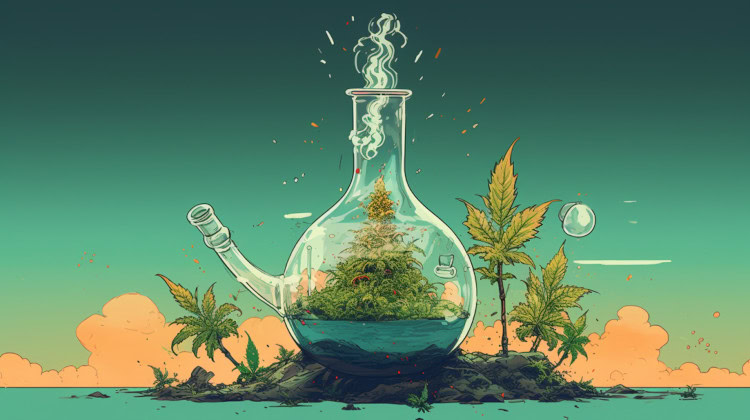
- Disassemble The Bong: Carefully remove the bowl, downstem, and other removable parts.
- Initial Rinse: Rinse the bong and its components with warm water to remove loose debris.
- Clean Smaller Parts: Place the bowl and downstem into separate resealable plastic bags. Add enough isopropyl alcohol to submerge the parts. Add a tablespoon or two of coarse salt to each bag. Seal the bags and gently shake them for a few minutes. For stubborn resin, the parts can soak for 30 minutes to an hour or overnight for significant buildups and stains.
- Prepare the Bong Chamber: Pour out any remaining water from the bong. Add a few tablespoons to a quarter cup of coarse salt into the base.
- Add Alcohol: Pour the alcohol into the bong, covering the main areas of resin buildup. Fill to approximately one quarter to half full.
- Seal and Shake: Seal the mouthpiece and downstem opening. Use the bong plugs, or cover the openings with plastic wrap and rubber bands. Grip the bong firm and gently shake it for five to ten minutes. The salt will act as an abrasive, scrubbing the resin off the glass, while the alcohol dissolves it. The liquid will turn brown or black.
- Empty and Rinse: Pour out the dirty alcohol and salt mixture down the drain. Rinse the bong and all its parts with warm water until all traces of alcohol, salt, and residue are gone.
- Tackle Stubborn Spots: Afterward, use a pipe cleaner or a soft bottle brush dipped in alcohol to scrub away any remaining residue.
- Dry: Allow all parts to air dry on a towel. Wait until all pieces are fully dry before reassembling.
The above method is best for most glass bongs. Bongs made from different materials require alternative cleaning methods and tools.
Why is a Clean Bong Important?
Keeping a bong clean is important to maintaining the quality of each piece, which will provide the best consumption experience. Most importantly, a clean bong helps to ensure the safety and health of the consumer.
- Health and Safety: Stagnant bong water can become a breeding ground for bacteria, mold, and other unwanted microorganisms. Studies and case reports link contaminated bong water to serious lung infections, such as necrotizing pneumonia caused by bacteria like Pseudomonas aeruginosa. Making matters more concerning, several studies found that cannabis may suppress the immune system slightly.1,2,3 Of course, these results are only preliminary, so more research is needed to say for sure how cannabis affects the immune system, but it is clear that dirty bong water isn't great for your health.
- Taste and Experience: In addition to health and safety concerns, resin buildup, stagnant water, and grime can all significantly impact the flavor of the flower being smoked. Once at this level, no amount of ice in the chamber will cool such a spicy hit.
- Optimal Performance: Grime and buildup eventually lead to a clogged bong. The source of the diminished functionality will be noticed in the downstem and bowl, creating restricted airflow and low hit quality.
- Longevity: Resin can become corrosive over time. Caked-on grime can be difficult to remove if left for too long and potentially stain the bong.
How Often Should a Bong Be Cleaned?
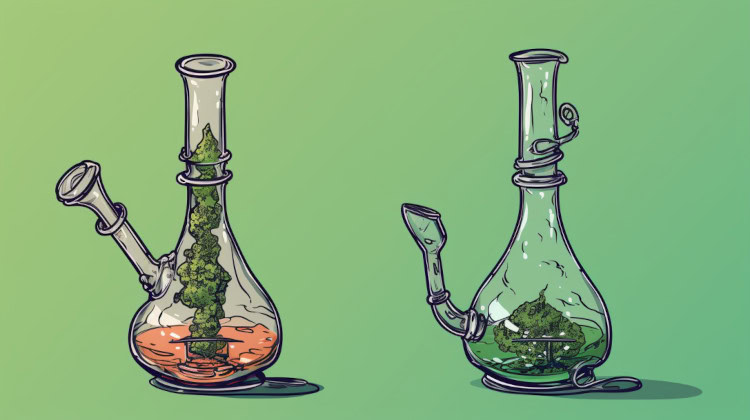
It’s a good general rule for all users to use fresh water for each bong session. However, the frequency of use often dictates how often the bong pieces should be cleaned. For example:
- Heavy/Daily Consumers: Bong cleaning should take place every one or two days.
- Moderate Consumers: Bongs used a couple of times a week should be cleaned at least once weekly.
- Once a Week or Less Consumers: Even if used weekly or less, it’s wise to wash a bong out weekly.
No matter the frequency of use, some suggest cleaning bongs after each session to ensure the optimal outcome. In any case, the more often a bong is cleaned, the more likely it is to create ideal experiences.
How to Clean a Silicone Bong
Silicone bongs are crowd pleasers because of their durability, something glass isn’t known for. This material requires a different cleaning method.
These bongs are generally cheaper and easier to clean than glass ones. Still, the proper cleaning method is important to maintaining its longevity, functionality, and high-quality experience.
- Use Dish Soap and Warm Water: This is often the safest and most effective method. Disassemble the silicone bong. Rinse with warm water. Use a mild dish soap and a soft brush or cloth to scrub the inside and outside.
- Avoid Isopropyl Alcohol: Alcohol can degrade silicone over time, resulting in swollen, brittle, and ineffective pieces. While some report occasional quick rinses with alcohol without issue, it's generally best to avoid it.
- Specialized Silicone Cleaners: Some companies make cleaners formulated specifically for silicone smoking devices. Be sure to avoid cleaners that use coarse salt or stiff brushes that could scratch or damage the silicone.
Is a Special Cleaner Needed for a Bong?
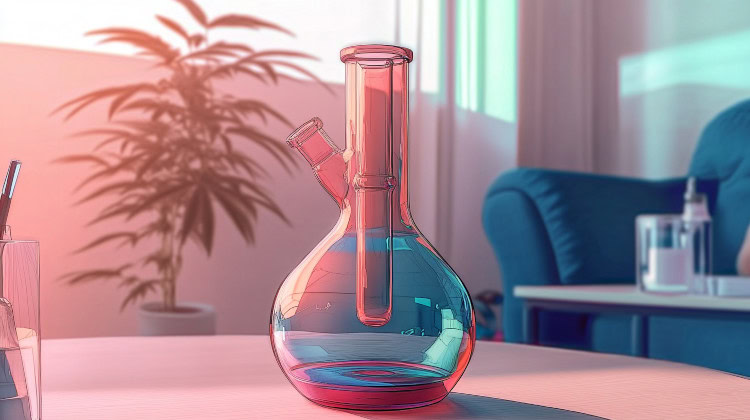
While a special bong cleaner isn't necessary, commercial products are available. These cleaners are often formulated to remove resin easily. Though, the alcohol and salt method usually works effectively for glass pieces and many accessories.
What to Look for in a Bong Cleaning Kit
If you decide to go the bong cleaning kit route, there are a couple of key components you should make sure your kit has:
- Cleaning Solution
- Brushes
- Plugs or Caps
- Scraper
The 5 Best Bong Cleaning Kits
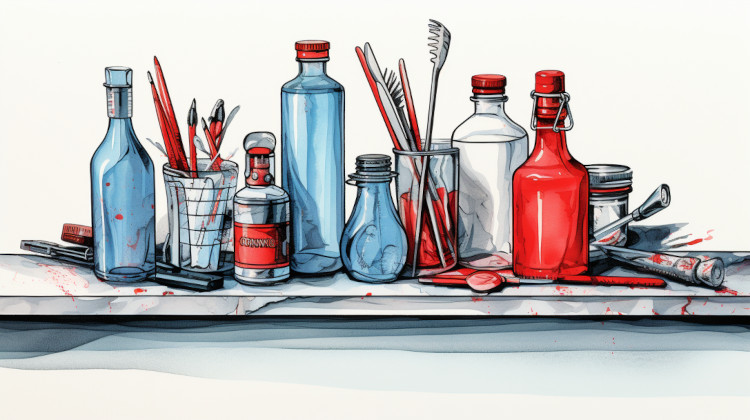
Keeping your bong clean is essential for smooth hits and optimal flavor. To make your life easier, we've curated a list of the top 5 bong cleaning kits, each tailored to specific needs and budgets.
1. Formula 420 3-Pack Bundle (Top-rated, effective, multi-purpose)
This kit is a customer favorite for a reason. It includes the brand's AbrasivAction technology that eliminates the need for soaking and scrubbing, tackling everything from light grime to stubborn resin build-up.
2. Blue Beetle Brushes Pro Kit (Versatile, thorough cleaning, scratch-free)
This kit prioritizes thorough cleaning with an arsenal of brushes in various shapes and sizes. From long stem brushes to angled scrubbers and bowl tools, it leaves no corner untouched.
3. Higher Standards Salt Rox (Chemical-free, eco-friendly)
Ditch the chemicals and embrace the power of nature with Salt Rox. These coarse rock salt granules are gentle on glass yet effectively grind away resin when shaken with water.
4. Piece Water Solution (Preventative, easy to use, fresh taste)
Elevate your bong experience with this innovative liquid that replaces bong water. Its natural extracts prevent resin build-up, leaving your bong clean and your hits fresh. Simply pour, enjoy, and rinse for a quick refresh.
5. BoroBuddy Mini (Compact, portable, convenient)
For the discreet smoker or travel enthusiast, the BoroBuddy Mini is a pocket-sized powerhouse. This magnetic cleaning pad attaches to the inside of your bong, effortlessly collecting resin as you smoke. Compact and convenient, it's perfect for on-the-go cleaning.
Can a Bong Be Cleaned with Boiling Water?
Yes, but washing any glass piece in boiling water poses a risk. Rapid temperature changes can cause thermal shock, resulting in cracks or shattering.
Can a Bong Be Cleaned Without Vinegar or Alcohol?
Warm water and dish soap may work on silicone bongs and minor glass cleanings. However, this method is less effective at breaking down significant resin buildup.
How to Store a Bong
Keeping a bong clean and safe is key to ensuring its quality and effectiveness.
- Empty the Water: Pour out bong water after use, especially if it won’t be used again anytime soon. Let it dry before storing.
- Safe Location: Store the piece in a place where it won't be knocked over. Using a padded case or a stable shelf helps improve its durability potential.
- Upright Position: Place the bong on its base in an upright position. Placing it on its side may cause it to roll and potentially break.
References
- Kumar AN, Soo CI, Ng BH, Hassan T, Ban AY, Manap RA. Marijuana "bong" pseudomonas lung infection: a detrimental recreational experience. Respirol Case Rep. 2017;6(2):e00293. Published 2017 Dec 22. doi:10.1002/rcr2.293 ↩︎
- Ribeiro L, Ind PW. Marijuana and the lung: hysteria or cause for concern. Breathe. 2018;14(3):196-205. doi:10.1183/20734735.020418 ↩︎
- Kumar, A.N., Soo, C.I., Ng, B.H., Hassan, T., Ban, A.Y.-L. and Manap, R.A. (2018) Marijuana “bong” pseudomonas lung infection: a detrimental recreational experience. Respirology Case Reports, 6 (2), e00293. doi: 10.1002/rcr2.293. ↩︎
The information in this article and any included images or charts are for educational purposes only. This information is neither a substitute for, nor does it replace, professional legal advice or medical advice, diagnosis, or treatment. If you have any concerns or questions about laws, regulations, or your health, you should always consult with an attorney, physician or other licensed professional.

